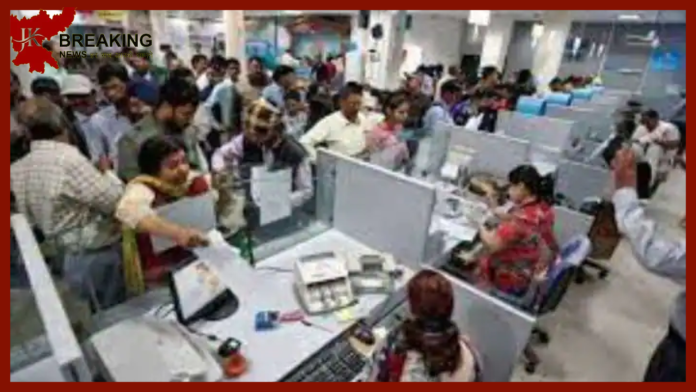What charges do banks charge: Many times you must have seen that sometimes 18 rupees and sometimes 30 rupees are deducted from your bank account. You may not know, but they do not cut without any reason and you can avoid them.
In today’s time, almost everyone has a bank account. Earlier, the reach of banking in India was less, that is, there were a large number of people who did not have an account in any bank, but the Pradhan Mantri Jan-Dhan Yojana changed its entire picture. Now this figure has increased rapidly.
If you are reading this article, then the chances of you not having a bank account are almost negligible, and since you have a bank account, you must have noticed many times that bank money is being withdrawn from your account in the name of different services. Let’s cut it.
Now so much population has account
Today we will talk about what charges are taken by the banks from us and from you and also we will know if there is any way to avoid them… But before proceeding let us know some basic things. In the year 2011, only 44 percent of people above 15 years of age in India had bank accounts.
Pradhan Mantri Jan-Dhan Yojana brought tremendous change in this figure. In the year 2021, the share of the population having a bank account has increased to about 78 percent in the age group above 15 years.
Charges according to the type of account
There are basically two types of accounts opened in the bank – Savings Account and Current Account. Common people open only savings account ie savings bank account. Current account is a better option for people who do heavy transactions. It is natural that most of the people doing business have a current account.
Now in the case of savings account, here too there are mainly two types – one is zero balance savings account i.e. such a savings account, in which there is no minimum balance limit, the other is minimum balance savings account i.e. such savings account, in which Can’t keep money less than a fixed amount.
Let us know the main charges of banks
Irrespective of the category in which your account falls, you have to pay the charges. Yes, the number of charges and their amount may vary depending on the category. Let us know about some of the main charges levied on the bank account and also how they can be avoided…
1: Maintenance / Service Fee: All banks charge this charge for maintaining your account. This applies to all types of accounts. Its rates may differ according to the banks.
How to avoid: Many banks waive it if the transaction exceeds a limit. You can know this by reading the terms and conditions of your bank.
2: Debit Card Fee: Banks usually give debit card along with the account opening. It is not free. For this, all banks charge on an annual basis.
How to avoid: If you do not need a debit card, do not take it from the bank. If you have more than one account, take the card for only one.
3: Other ATM Charges: If you use another bank’s ATM, then you will have to pay a charge for that. Now you can even withdraw money from your bank’s ATM for free only 4 times in a month.
How to avoid: Try to withdraw maximum money for the month’s expenses in one or two rounds. Avoid using other bank’s ATM.
4: Insufficient Funds: In accounts where minimum balance is required, banks levy charges if the money is less than the limit.
How to avoid: Maintain the minimum limit of your account.
5: Overdraft Fee: This is not applicable for everyone. Not all banks provide this facility. Under this, you can withdraw money up to a limit even if there is no balance.
How to Avoid: Try never to need it. For this, you should keep a fund ready by inculcating the habit of regular savings.
6: Transfer Fee: You can send money to any other account through means like UPI, IMPS, RTGS, NEFT. Not all of these are free. Many banks charge money on IMPS transfer.
How to avoid: Use UPI, RTGS, NEFT etc. for payment.
7: Account closing charge: If you close the bank account, then the bank can charge you for this. So never open an account blindly.
How to avoid: Banks do not charge for closing the account after some time of opening, so see this condition before closing the account.
8: Dormancy Fee: If you do not do any transaction from the account for a long time, then the banks make it dormant. Usually its limit is one year.
How to avoid: Do not leave the account without transaction for a long time. By putting some money in such an account, you can withdraw it. This will keep the account active.


